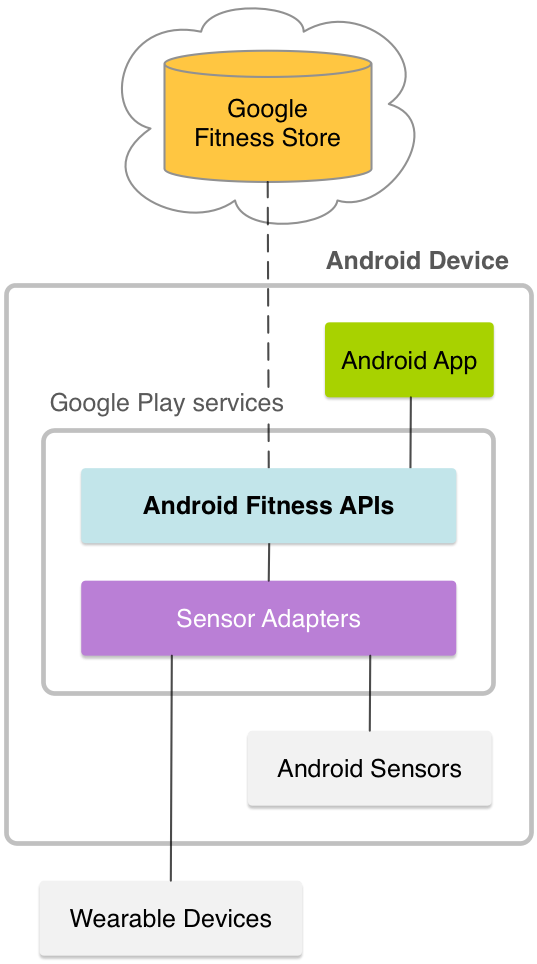Android 適用的 Google Fit API 屬於 Google Play 服務的一部分。Android 4.1 (API 級別 16) 以上版本支援 Google Fit API。應用程式可運用這些 API 執行以下操作:
- 讀取近乎即時的歷史資料,包括藍牙低功耗 (BLE) 裝置提供的資料。
- 記錄活動。
- 為資料與工作階段建立關聯。
- 設定健身目標。
讀取感應器資料
如果應用程式提供使用者活動的相關資訊 (例如每日步數),顯示使用者移動的近乎即時資料可能會很有幫助。感應器 API 可讓您存取包含此資訊的原始資料串流。這類資料可能來自 Android 裝置上的感應器,以及隨附裝置 (例如穿戴式裝置) 中的感應器。
記錄資料
如果應用程式需要收集、儲存及同步處理使用者實體活動相關資料,可以使用 Recording API。這個 API 會使用訂閱項目儲存健康與保健資料。您的應用程式指定要記錄的一種或多種活動類型。這樣一來,即使應用程式未執行,Google Fit 仍會在背景儲存指定類型的資料。也會在系統重新啟動時還原這些訂閱項目。

歷來資料
如果您希望使用者能夠查看過往活動的健身資料,可以使用 History API。這個 API 可讓您存取歷史健康與保健資料,並可讓應用程式執行大量作業,例如插入、刪除及讀取資料。
工作階段
健身資料本身十分有用,但若能結合使用者活動的額外資訊,資料會更實用。Sessions API 會將健康與保健資料和部分中繼資料組合成名為「工作階段」的單位。工作階段代表使用者執行健身活動的一段時間間隔。
查看及設定目標
應用程式會顯示使用者的健身活動與所設定目標的比較結果,藉此激勵使用者。Goals API 可協助應用程式向使用者顯示他們建立的健康與健身目標。

